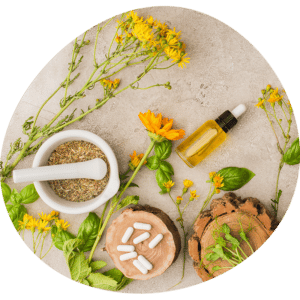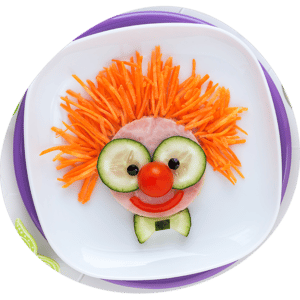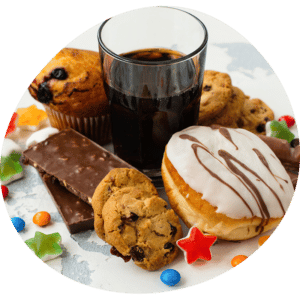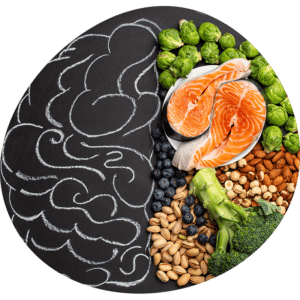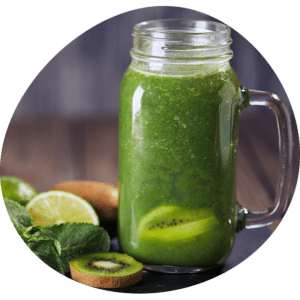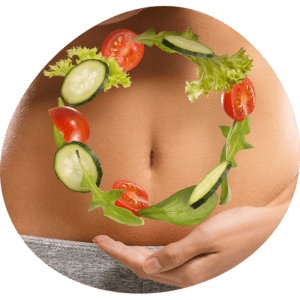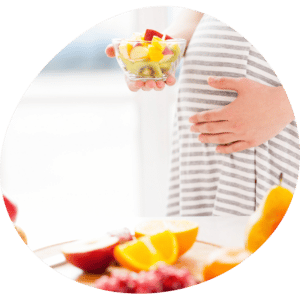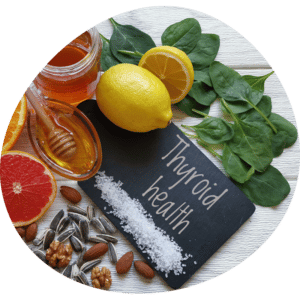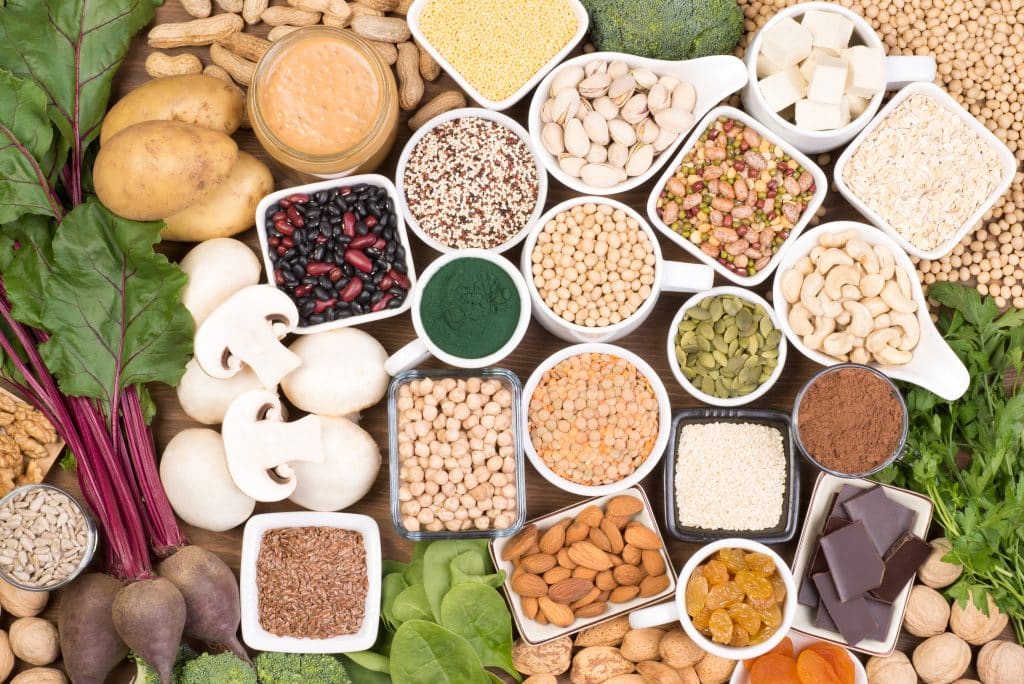
The causes of iron deficiency
Many women and children come to see me because of persistently low iron which is causing fatigue. Iron usually becomes low due to 3 factors:
- Inadequate intake of iron containing foods
- Inadequate absorption of iron in the gut
- Increased losses of iron
Infants until the age of 12 months require 11mgs of iron per day. Children up to 8 years old require 13 mg per day, adolescent boys require 11mg of iron per day, menstruating women require 18 mg per day and men and non-menstruating women require 8mg per day. During pregnancy, women require 27mg of iron per day.
Why we need iron
Iron is an essential nutrient involved in multiple biochemical and physiological reactions in the body, including DNA replication. The brain uses iron to manufacture melatonin, the thyroid uses iron to convert thyroid hormone from its inactive to its active form and the mitochondria uses iron to produce ATP. Your blood uses iron to form haem in haemoglobin which carries oxygen around the body to tissue where it is utilised. Iron is used to catalyse the reactions which form dopamine and melatonin in the brain, and to convert plant-based vitamin A to retinol, the form the body utilises more readily.
Iron is stored in the body as ferritin in the liver and spleen. In a state of inflammation, ferritin can also be produced in the form of apoferritin, which elevates the ferritin scores seen in blood tests, however no iron is found in the apoferritin state, therefore states of inflammation can make iron stores appear more robust than they are.
Symptoms of iron deficiency
- Fatigue
- Poor focus, particularly in children
- Frequent yawning
- Irregular heartbeat
- Insomnia
- Restless legs
- Cold hands and feet
- Hair loss
Factors affecting gut absorption
Iron is absorbed in the duodenum and jejunum of the small bowel, therefore states of inflammation affecting these areas of the gut can result in poor iron absorption. Frequently people with small intestinal bacterial overgrowth (SIBO) will malabsorb iron. We require adequate stomach acid to absorb many minerals, including iron, therefore the use of reflux medications can affect absorption of many minerals.
Conditions that affect the health or the small intestine will affect our ability to absorb iron, most notably, coeliac disease. If you have chronic iron issues, it is essential that coeliac disease has been ruled out. If you have removed gluten from your diet for any reason, you must include gluten back in the diet for a minimum of 6 weeks before testing for coeliac disease. Alternatively, you can test for the genes associated with coeliac disease, as if you do not have these genes, it is unlikely coeliac disease is present.
Certain pathogenic bacteria sequester iron in the gut. Most notable are klebsiella, streptococcus and staphylococcus. These bacteria can be associated with small intestinal bacterial overgrowth, which is commonly experienced as IBS-like symptoms such as bloating, gas, distention, and bowel frequency irregularity – it is optimal to pass food through your digestive system within 16-24 hours. You can test this using a transit time test which involves consuming a large tablespoon of sesame seeds and waiting to see them in your stool.
Leaky gut caused by food allergies, bad bacteria in the microbiome and excessive inflammation can affect iron absorption. Leaky gut can be tested using a lactulose mannitol test. A microbiome test can assess for the presence of bacteria associated with leaky gut. Usually this is my preferred approach as we then know the cause of the problem.
The best foods for iron deficiency
Iron in the diet is inhibited by the presence of oxalates, phytates, fibre, tannins, and caffeine in food or drinks, therefore if anaemia is an issue, iron rich foods and supplements should be separated from these foods and drinks. Iron competes for absorption with other minerals also, particularly copper, zinc, phosphate, and manganese, therefore taking iron in the form of a multivitamin offers little to correct an iron deficiency.
Iron in the diet comes in 2 forms, haem iron from animal sources, and non-haem iron from plant sources. Unfortunately, non-haem iron is usually packed with phytonutrients which inhibit its absorption such as phytates and oxalates, therefore absorption from plant foods can be very difficult. Because plant sources of iron are poorly absorbed, it is recommended vegans aim to exceed the recommended intake listed below. Preparing foods correctly, can reduce the content of phytates and oxalates. For example, cooking spinach reduces oxalates, and makes iron more bioavailable and soaking legumes prior to cooking reduces phytates which then improves nutrient absorption and digestibility of legumes. These steps are essential for vegans suffering from iron deficiency.
| Haem Iron sources | ||
| Food | Serving size | Iron content in mgs |
| Beef | 100 grams | 3.1mg |
| Sardines | 120 grams | 3.2 mg |
| Lamb | 100 grams | 2.5 mg |
| Pork | 100 grams | 1.4 mg |
| Salmon | 100 grams | 1.3 mg |
| Tuna | 100 grams | 1.07 mg |
| Egg | 1 egg | 1.1 mg |
| Chicken | 100 grams | 0.9 mg |
| Snapper | 100 grams | 0.3 mg |
| Cows Milk | 1 cup | 0.3 mg |
| Cheese | 1 slice | 0.1 mg |
| Plant-Based Iron sources | ||
| Food | Serving size | Iron content in mgs |
| Tofu | 100 grams | 5.2 mg |
| Chickpeas | 100 grams | 6.2 mg |
| Lentils | 1 cup | 3 mg |
| Baked Beans | 140 gram tin | 3 mg |
| Kidney beans or 3 bean mix | Half cup | 2 mg |
| Spinach cooked (cooking reduces oxalates and increases iron bioavailability) | Half cup | 2.2 mg |
| Kale | 1 cup | 1 mg |
| Silverbeet | Half cup (cooked) | 1.3 mg |
| Beetroot | 3 slices | 1.2 mg |
| Asparagus | 5 spears | 1 mg |
| Green beans | Half a cup | 1 mg |
| Broccoli | 1 cup | 0.86 mg |
| Potato | 1 small | 0.5 mg |
| Dried Apricot | 8-10 apricots | 1.5 mg |
| Prunes | 6 prunes | 0.55 mg |
| Sultanas | 37 grams | 0.74 mg |
| Black Strap Molasses | 1 tablespoon | 2.3 mg |
| Pistachios | 50 grams | 2 mg |
| Cashews | 20 nuts | 1.5 mg |
| Almonds | 30 grams | 1.1 mg |
| Pine Nuts | 3 tablespoons | 2 mg |
| Peanut Butter | 1 tablespoon | 0.5 mg |
| Oats | Half a cup | 0.75 mg |
| Rye Bread | 1 Slice | 1.4 mg |
| Brown Rice | Half a cup (cooked) | 0.35 mg |
| Soy Milk | 1 cup | 1.6 mg |
Factors that increase iron absorption include vitamin C, vitamin A and B5. Cooking foods will improve iron absorption also. Avoid taking iron supplements with meals or drinks other than orange juice or water. If you’re an omnivore, combining haem and non-haem iron sources will enhance the absorption of non-haem iron sources. Black strap molasses is an excellent source of highly available non-haem iron for vegans and vegetarians as it is estimated that up to 95% of the calcium and iron is absorbed from black strap molasses. I recommend using it in bliss balls, when making homemade granola and within homemade baked goods.
To learn more about Iron and the recommended intake for children, teens and adults download my free Iron info sheet HERE. I also have a version for vegans HERE.
Excessive iron losses
Excessive losses of iron are mostly seen in menstruating women experiencing heavy or prolonged menstrual bleeding. These losses can be caused by oestrogen excess, progesterone deficiency, fibroids, adenomyosis or endometriosis. Speaking to your GP for a referral to a gynaecologist who performs a 3D transvaginal ultrasound can help with screening for this. Functional testing such as DUTCH testing can effectively screen you for hormonal imbalances. If you think this is you, please book an appointment to discuss your options.
Iron can also be lost via the digestive system, particularly if an ulcer is present. A test for occult blood in the stool will identify if this is an issue for you. Black stool and gnawing gut pain is a sign of ulcer.
Final considerations
Iron in the body is inhibited by lead or mercury toxicity, therefore chronic anaemia can result from stored heavy metals in the body. In my clinic, I screen for mineral excesses or deficiencies using hair tissue mineral analysis.
Iron supplementation is best performed every second day to enhance the bioavailability of the iron. When we take daily iron, the body upregulates hepcidin, which prevent absorption of iron. Not all forms of iron are created equal. Avoid iron salts such as sulfates and opt for chelated forms of iron, particularly diglycinates. Not all clients respond to the same form of iron, so if one iron form doesn’t work for you, then it is prudent to try another form. There are herbs which can improve the absorption of iron. We can include a herbal formula with your iron prescription to give you the best chance of improving your iron status.
Finally, don’t stay on iron supplements forever. Iron is inflammatory and feeds some of the bad bacteria in the microbiome, therefore it is essential to get to the root cause of your iron issues by exploring functional tests and speak to your GP about retesting your iron after 4 months of continual supplementation to keep an eye on whether it is still required.
Share this Blog
If you enjoyed this article share it across your socials


